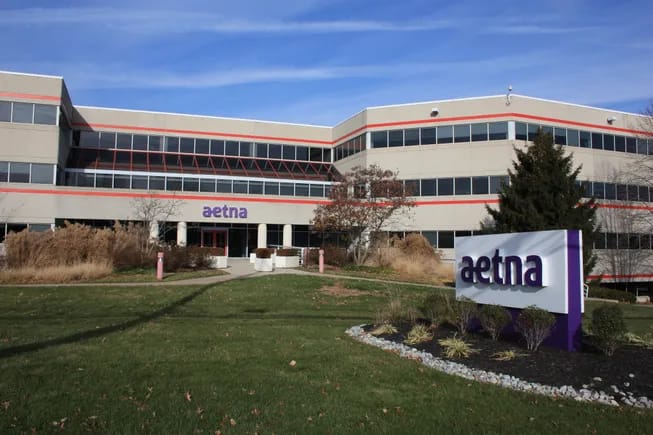This audio is auto-generated. Please let us know if you have feedback.
The CMS’ first audit of an insurer for compliance with a law preventing surprise bills for consumers found some evidence to support provider allegations that insurers are gaming the system to lower or delay payments for out-of-network medical services.
That’s in part because insurers set the initial payments to providers for out-of-network care, which are often tied to a metric called the qualifying payment amount, or QPA. The QPA is also used by third-party arbiters to decide on a final reimbursement for providers if they can’t agree with insurers on an amount.
Interestingly, regulators’ newly published audit of CVS-owned Aetna in Texas found the insurer was both overestimating and underestimating its QPAs for certain air ambulance services. That’s because Aetna was using the wrong methodology to calculate the metrics, the audit found.
The CMS also found Aetna wasn’t sending providers required disclosures under the No Surprises law, including the window for kicking off third-party arbitration and the insurer’s QPA for a claim.
That lack of clarity could make it more difficult for providers to enter arbitration, while further delaying the already backlogged dispute process, according to Jeffrey Davis, health policy director at law firm McDermott Will & Emery’s healthcare consultancy.
The audit is relatively small in scope, analyzing Aetna’s dealings with air ambulances in one state for the first half of 2022 and finding only a handful of errors. Aetna also came back into compliance with the law after the audit’s findings.
But “I think this is a big deal,” Davis said. Aetna “did not follow some major requirements that are essential to ensuring that the IDR process runs smoothly.”
No Surprises’ first insurer audit
The No Surprises Act, which went into effect January 2022, set up a process for payers and providers to resolve payment disputes when a patient receives unavoidable out-of-network care. When billed by an out-of-network provider, insurers offer an initial payment meant to reasonably cover the service.
If the provider doesn’t accept that amount and the two sides can’t agree to a compromise during an open negotiation period, they can enter independent dispute resolution. IDR is a baseball-style arbitration process where each side submits a payment offer to a third-party mediator, who then selects one amount. Mediators can consider the QPA in their decision.
Neither insurers nor providers are entirely happy with the setup. Payer groups argue a small group of providers are weaponizing IDR in order to increase their profits, while providers say the process is weighted in favor of insurance companies.
Providers report that insurers have artificially lowered QPAs and paid below market rates for out-of-network services since No Surprises began.
The CMS’ audit found the former might be true for Aetna Health of Texas — but only for two air ambulance QPAs in the first six months of 2022. For two others, Aetna’s miscalculation actually resulted in higher QPAs, according to the audit.
The QPA is meant to be an average of median in-network rates for an item or service in a specific geographic area.
However, Aetna was using actual claims paid amounts instead of contracted rates to calculate the QPA, according to the audit.
Aetna also counted each claim as its own contracted rate, even when the claims were the same exact amount for the same item or service — and to the same air ambulance provider, the audit found.
Regulators found five incorrect QPAs used by Aetna to pay air ambulances
QPA comparison, Aetna Health of Texas
After being informed of its error, Aetna recalculated the QPAs using contracted rates. Still, the CMS is requiring the payer to self-audit all QPA calculations for air ambulance services from 2022 to date to make sure they’re accurate.
Insurers improperly calculating QPAs also has ramifications on consumers. The QPA is the benchmark for determining patients’ payment obligations for out-of-network care, so higher QPAs could equate to higher cost sharing.
As such, the CMS is also requiring Aetna to refund members any overpayments it might owe them based on the correct QPAs.
A spokesperson for Aetna did not comment on how many members this affects or how much money it might need to refund.
The audit also found that Aetna didn’t always inform providers that they could initiate IDR within four days after the end of open negotiations, and didn’t always tell providers the QPA when informing them of a claim’s payment or denial.
Regulators are making Aetna upgrade its disclosure language to meet the requirements.
A spokesperson for the insurer called the audit “routine” in an emailed statement.
“We addressed all the report’s findings to CMS’ satisfaction,” the spokesperson said.
Controversy over the methodology for calculating QPAs has underpinned a series of court cases in Texas. Judges have generally ruled in favor of providers, leading regulators to pause and revamp the arbitration process before billing negotiations could resume.
Partially as a result of those pauses, IDR has been bogged down by a growing backlog of billing disputes. The government has also received significantly more requests for arbitration than it expected.

